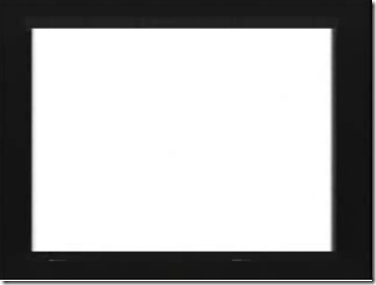I am fond of Avant garde art of all sorts. From the Russian Oberiu group which includes people like Daniil Kharms, who I wrote about before at some length in the post Dystopia, to stuff Yoko Ono has done to situationist détournement to modern dance performances and street art. Here’s a great big juicy list on Wikipedia List of avant-garde artists.
I don’t analyze art much in any sort of “art history” or “aesthetic philosophy” way, even though I took such courses once upon a time. It’s just something I like to enjoy and think about. One of my favorite websites is UbuWeb which is chock full of the stuff.
Today in UbuWeb’s Twitter stream they pointed out a short film by Nam June Paik.

Nam June Paik (1932-2006) was a Korean-American artist who has produced many interesting pieces of work, a lot of them referencing Buddhist concepts. Many other artists have been influenced by his work, as the write up for Skip Blumberg – Nam June Paik: Lessons from the video master (2006) indicates:
Nam June Paik was the first video artist and did almost everything in video art first. His work broke the rules of art, television, graphics, and, because TV can use all possible art and information, practically everything else, too.
His first video sculptures, such as a Buddha watching his own image on TV and a magnet on the side of a TV set that pulls the TV image into abstractions, were shown at the Galeria Bonino, the Howard Wise Gallery, the Rose Art Museum and many others, beginning in 1965.
Nam June Paik was interested in the intersection between humanity and technology. He said:
Our life is half natural and half technological. Half-and-half is good. You cannot deny that high-tech is progress. We need it for jobs. Yet if you make only high-tech, you make war. So we must have a strong human element to keep modesty and natural life.

Image from the installation of 1974 on Nam June Paik’s official website.
Probably his most famous work depicts a Buddha statue watching itself on closed circuit TV. The questions such a piece of art brings up are numerous.
Is this a metaphor for meditation?
Is it a metaphor for narcissism?
How is our self image mediated by technology?
What is the subject and what is the object in this configuration?
As these are all manufactured objects where is the human in them?
Is the human becoming something of a ghost in the machine?
What of this Buddha figure with it’s apparent unchanging posture and stare?
Is the statue any different than “a rice bag”? –referring to the Zen story collected in Zen Flesh, Zen Bones:
A Zen master named Gettan lived in the latter part of the Tokugawa era. He used to say: "There are three kinds of disciples: those who impart Zen to others, those who maintain the temples and shrines, and then there are the rice bags and the clothes-hangers."
Like I said lots of questions.
The film pointed out by UbuWeb, "Zen For Film" [(1962-64), 8 min, b&w, silent] is an eight-minute strip of clear 16mm film leader. Nothing really happens in it in terms of a narrative, as it’s just a white square. Yet it is quite a strange experience to watch. There is a film, or a piece of film being projected, it’s just that there’s nothing deliberately placed on that piece of film.
It’s interesting to watch the whole 8 minutes, especially if you watch it with some self-awareness (I was going to say mindfulness but blah). When I watched it I noted:
- my eyes didn’t stop moving, searching the screen for something, some kind of input
- I got a sensation of anxiety and anticipation as if I were waiting for something to happen
- the occasional passing dust mote caused me to snap to attention
- all kinds of thoughts passed “Why am I wasting my time with this?”, “What’s the point of this?”, “Is this information?”, “If not then what is it?”, and so forth.
Give it a try and see what you come up with if you’re just killing time on the Internet.
Here are screen captures of some of the highlights if 8 minutes is too arduous to endure. You can project all your own notions upon it.



